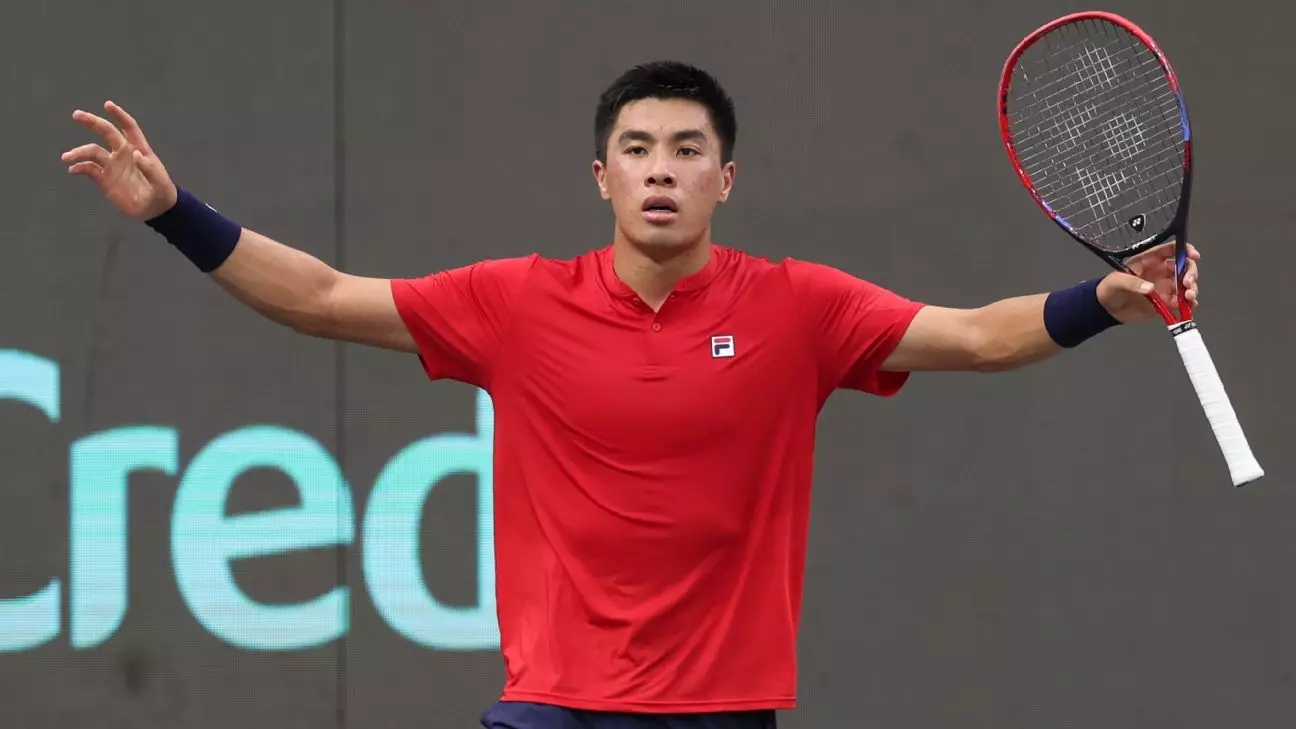In an impressive display of talent and determination, a second-string United States tennis team showcased its prowess by overpowering Germany in a pivotal group stage match of the Davis Cup. This victory, achieved in Zhuhai, China, not only cemented the American team’s dominance but also extended their winning streak, showcasing the depth and resilience of U.S. tennis even in the absence of its most celebrated players. The Davis Cup remains one of the most esteemed competitions in tennis, and the determination displayed by the U.S. squad highlights the essence of this prestigious event.
The absence of key players such as US Open runner-up Taylor Fritz, alongside other prominent athletes like Tommy Paul and Frances Tiafoe, could have left a significant gap. However, the American team displayed remarkable depth, proving that the spirit and skill of less heralded players can triumph against formidable opponents. The importance of teamwork and unity cannot be overstated in tournaments like the Davis Cup, where national pride and individual excellence amalgamate into a powerful force against competing nations.
The Matchup Against Germany: Strategy and Skill
The match against Germany was critical not just for standings but also for the morale of the team. Leading the charge was Brandon Nakashima, whose outstanding performance secured a crucial point for the Americans. By defeating Maximilian Marterer with a score of 6-4, 6-2, Nakashima demonstrated not only his personal skill but also his ability to shine under pressure. His victory provided the United States with a commanding 2-0 lead, pushing them closer to an inevitable qualification for the knockout stages.
However, the highlight of the day wasn’t limited to Nakashima’s star performance. Reilly Opelka, World No. 309 and making his return after recent surgeries, showcased resilience and unwavering spirit. His victory over Henri Squire—complete with a comeback from three match points down—was a moment that embodied the true essence of competitive sports. The emotional rollercoaster of a closely contested match, finishing with scores of 6-7 (4), 7-6 (9), 6-3, illustrated not just individual capability but a glimmer of hope for U.S. tennis.
Despite the loss in the doubles match, where Tim Puetz and Kevin Krawietz triumphed over Rajeev Ram and Austin Krajicek, the U.S. team remained undeterred. Such losses in tennis, especially in team formats like the Davis Cup, provide crucial learning experiences. Captain Bob Bryan expressed satisfaction with the week’s overall outcomes, indicating that the team had used the matchups to assess their strengths and areas for improvement.
Bryan’s acknowledgment of the depth in U.S. tennis was not merely idle praise; it was a statement underscored by the depth in rankings of U.S. players. This underscores a vital point in sports: success is not merely about the star players but also about building a formidable team that can support each other during moments of adversity.
With this solid performance, the United States now gears up for the quarterfinals, where they will face a yet-to-be-determined opponent from other groups. The anticipation surrounding this stage is palpable, as the competition will intensify and the stakes will be higher. The United States is poised for a potential clash against heavyweights Spain and Australia, both of which boast strong tennis traditions and formidable teams.
The upcoming matches in Malaga, Spain, serve as not just a tournament, but a celebration of the international camaraderie that tennis fosters. The mixture of excitement and pressure will be felt by all teams as they seek to etch their names in the annals of Davis Cup history. The ability of the United States team to adapt and evolve following each match will be critical. The experience gained from the Zhuhai matchups will undoubtedly serve them well as they navigate through the knockout stage.
In Conclusion: A Bright Future for U.S. Tennis
As the curtain falls on this week’s group stage, the spotlight shifts from individual excellence to a greater narrative—the rise of a well-rounded U.S. team. The collective tenacity, talent, and tactical depth of the squad are at the forefront, demonstrating that while individual stars shine brightly, it is often the collective effort that illuminates the path to success. With the Davis Cup format emphasizing national pride and teamwork, the journey of this U.S. team serves as inspiration for budding tennis players and enthusiasts alike. The stage is set for a thrilling quarterfinal, and the anticipation among fans and players alike is incalculable.


Leave a Reply